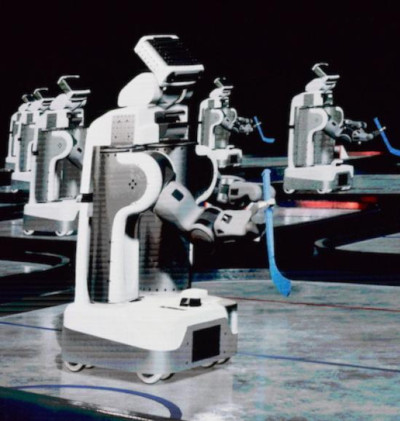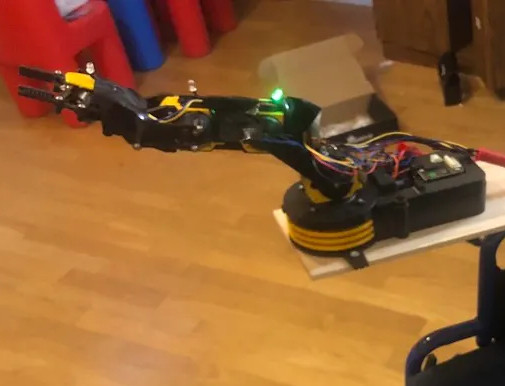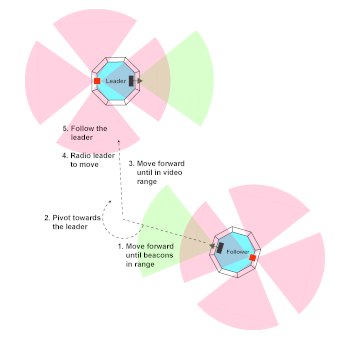Fair Categories By Division
| Category |
|---|
| General Science (Elementary) |
| Category |
|---|
| General Science (Junior) This category covers all science and engineering categories. |
| Category |
|---|
| Robot System Design Systems can single or multiple robots that are used in competitions like RoboCupJunior or FIRST Robotics. In this case, please highlight what you did different and what make your robotic unique. Robots do not have to be used in other competitions to participate in this event though. Many will be unique, one-of-a-kind designs. Some will be designed for specific purposes. Others may be built simply for research purposes. This category looks at the whole system design. If your robot was constructed for testing a specific aspect such as sensor integration or path planning, you might want to check out one of the other categories that drill down into those specific areas. Regardless of what category you choose, we are interested in seeing what you did, how you did is and what you can share with your peers! |
| Algorithms and Software Design
Software that is specific to a subsystem task such as mobility or motor control should be entered in those categories. This category covers everything else including:
|
| Mobility Design, Mechanics and Actuators
Topics can include features such as:
|
| Sensor Design and Context Awareness
Topics for this category include:
|
| Category |
|---|
| Animal Science This category includes all aspects of animals and animal life, animal life cycles, and animal interactions with one another or with their environment. Examples of investigations included in this category would involve the study of the structure, physiology, development, and classification of animals, animal ecology, animal husbandry, entomology, ichthyology, ornithology, and herpetology, as well as the study of animals at the cellular and molecular level which would include cytology, histology, and cellular physiology. |
| Behavioral and Social Science The science or study of the thought processes and behavior of humans and other animals in their interactions with the environment studied through observational and experimental methods. |
Biochemistry, Biology and MedicalBiochemistryThe study of f the chemical basis of processes occurring in living organisms, including the processes by which these substances enter into, or are formed in, the organisms and react with each other and the environment. Biomedical and Health SciencesThis focuses on studies specifically designed to address issues of human health and disease. It includes studies on the diagnosis, treatment, prevention or epidemiology of disease and other damage to the human body or mental systems. Includes studies of normal functioning and may investigate internal as well as external factors such as feedback mechanisms, stress or environmental impact on human health and disease. Translational Medical ScienceProjects that aim to improve human health and longevity by translating novel discoveries in the biomedical sciences into effective activities and tools for clinical and public health use. Bi-directional in concept, projects can be those developed through basic research moving toward clinical testing (bench-to-bedside) or projects that provide feedback about the applications of new treatments and how they can be improved (beside-to-bench). |
Chemistry and MaterialsChemistryStudies exploring the science of the composition, structure, properties, and reactions of matter not involving biochemical systems. Materials ScienceThe study of the integration of various materials forms in systems, devices, and components that rely on their unique and specific properties. It involves their synthesis and processing in the form of nanoparticles, nanofibers, and nanolayered structures, to coatings and laminates, to bulk monolithic, single-/poly-crystalline, glassy, soft/hard solid, composite, and cellular structures. It also involves measurements of various properties and characterization of the structure across length scales, in addition to multi-scale modeling and computations for process-structure and structure-property correlations. |
EnergyEnergy: ChemicalStudies involving biological and chemical processes of renewable energy sources, clean transport, and alternative fuels. Energy: PhysicalStudies of renewable energy structures including energy production and efficiency. |
Environmental Science and EngineeringEARTH AND ENVIRONMENTAL SCIENCESStudies of the environment and its effect on organisms/systems, including investigations of biological processes such as growth and life span, as well as studies of Earth systems and their evolution. ENVIRONMENTAL ENGINEERINGStudies that engineer or develop processes and infrastructure to solve environmental problems in the supply of water, the disposal of waste, or the control of pollution. |
| General Engineering This category includes the following types of projects: ENGINEERING MECHANICSStudies that focus on the science and engineering that involve movement or structure. The movement can be by the apparatus or the movement can affect the apparatus. ROBOTICS AND INTELLIGENT MACHINESStudies in which the use of machine intelligence is paramount to reducing the reliance on human intervention. |
| Mathematics, Physics and Astronomy This category includes the following types of projects: MATHEMATICSThe study of the measurement, properties, and relationships of quantities and sets, using numbers and symbols. The deductive study of numbers, geometry, and various abstract constructs, or structures. PHYSICS AND ASTRONOMYPhysics is the science of matter and energy and of interactions between the two. Astronomy is the study of anything in the universe beyond the Earth. |
| Software and Embedded Systems This category includes the following types of projects: EMBEDDED SYSTEMSStudies involving electrical systems in which information is conveyed via signals and waveforms for purposes of enhancing communications, control and/or sensing. SYSTEMS SOFTWAREThe study or development of software, information processes or methodologies to demonstrate, analyze, or control a process/solution. |
| Plant Science Studies of plants and how they live, including structure, physiology, development, and classification. Includes plant cultivation, development, ecology, genetics and plant breeding, pathology, physiology, systematics and evolution. |
| Category |
|---|
| Robot System Design This category covers all robots. Presentations should highlight the overall design rather than individual components that should be presented in other categories. |

 This category addresses the software support needed with a robotic project.
This category addresses the software support needed with a robotic project. This category covers all things mechanical including the physical aspects of robots and robotics. This includes software designed to control these systems as well.
This category covers all things mechanical including the physical aspects of robots and robotics. This includes software designed to control these systems as well. This category examines how a robot becomes aware of its surroundings and how it navigates using this information.
This category examines how a robot becomes aware of its surroundings and how it navigates using this information.